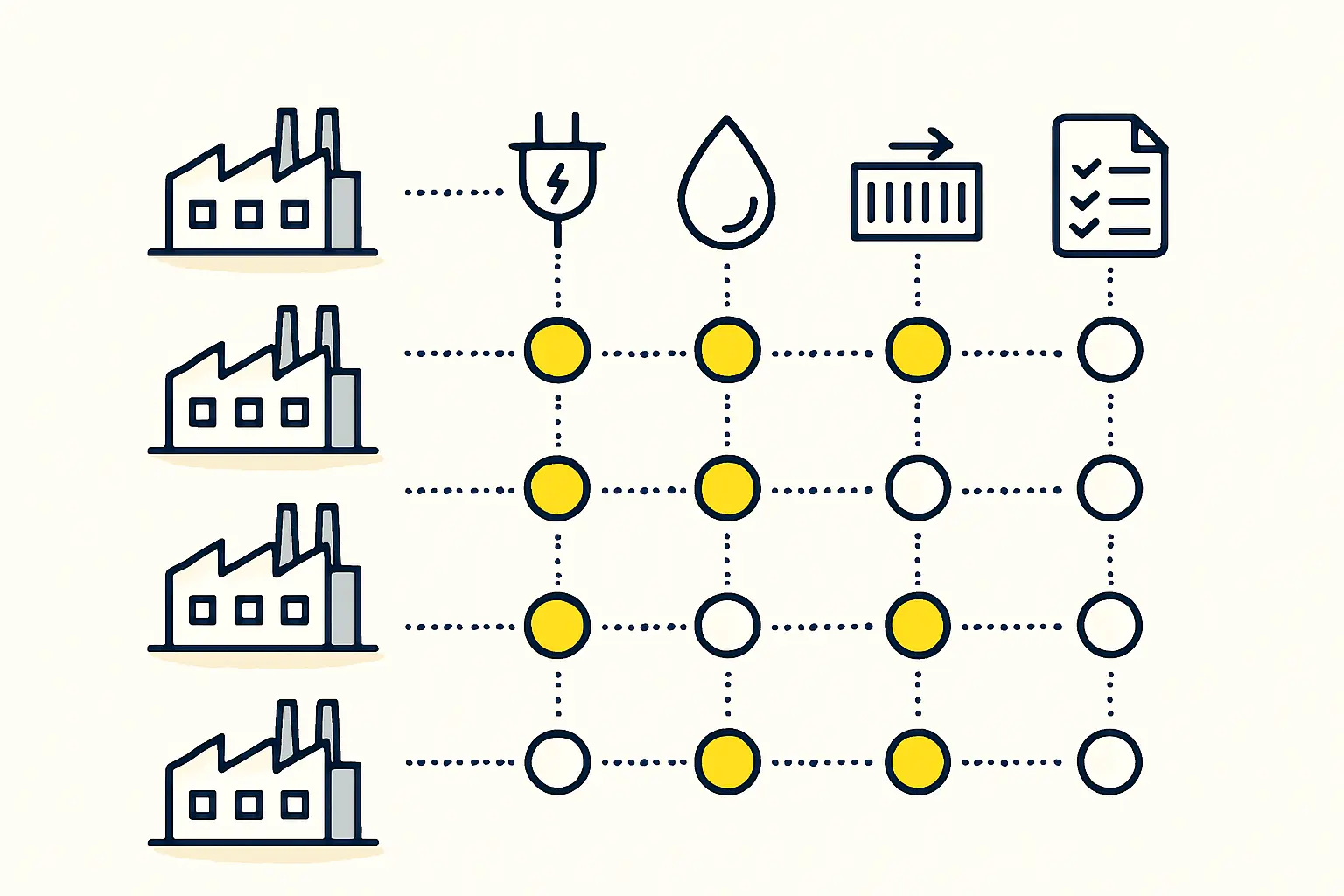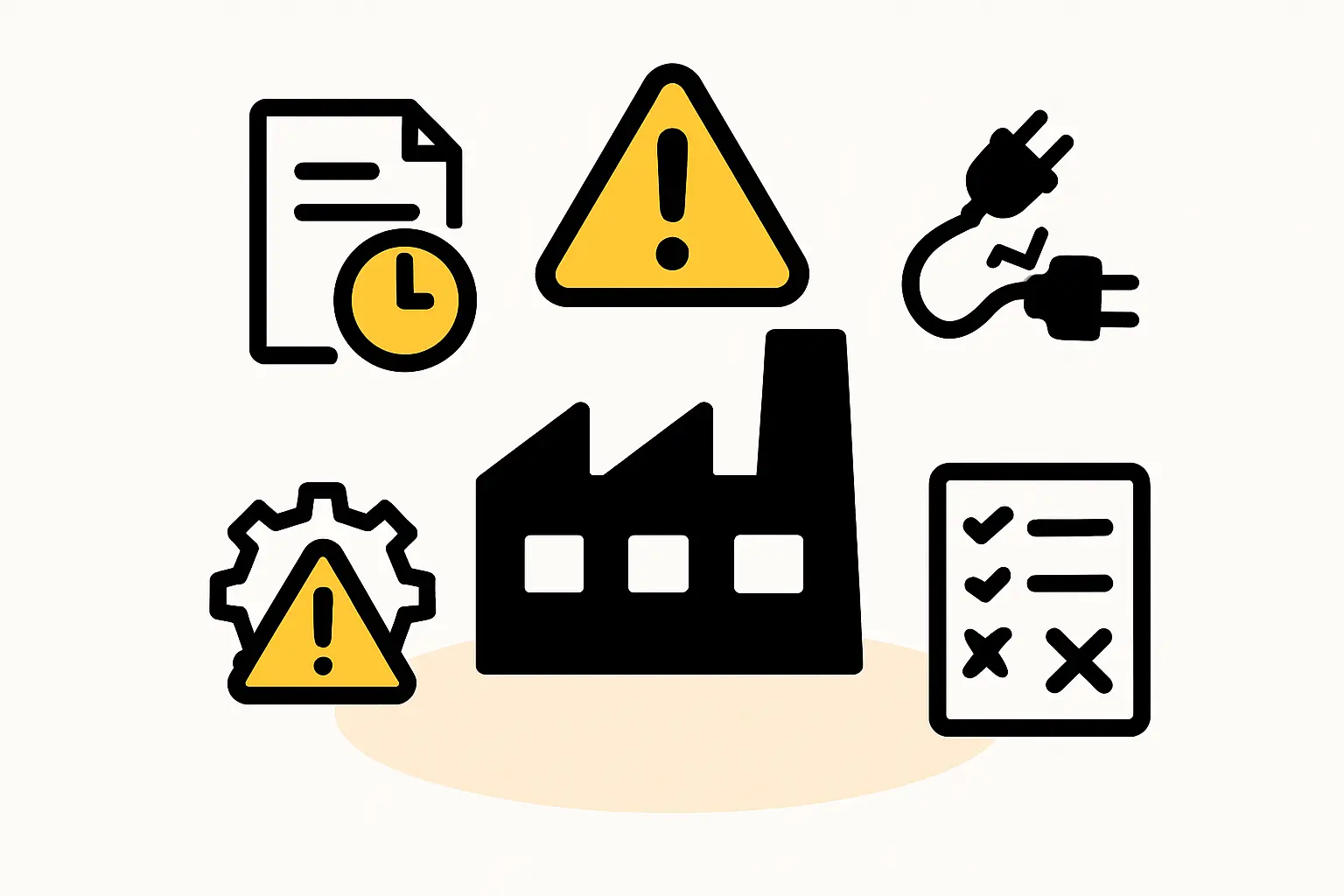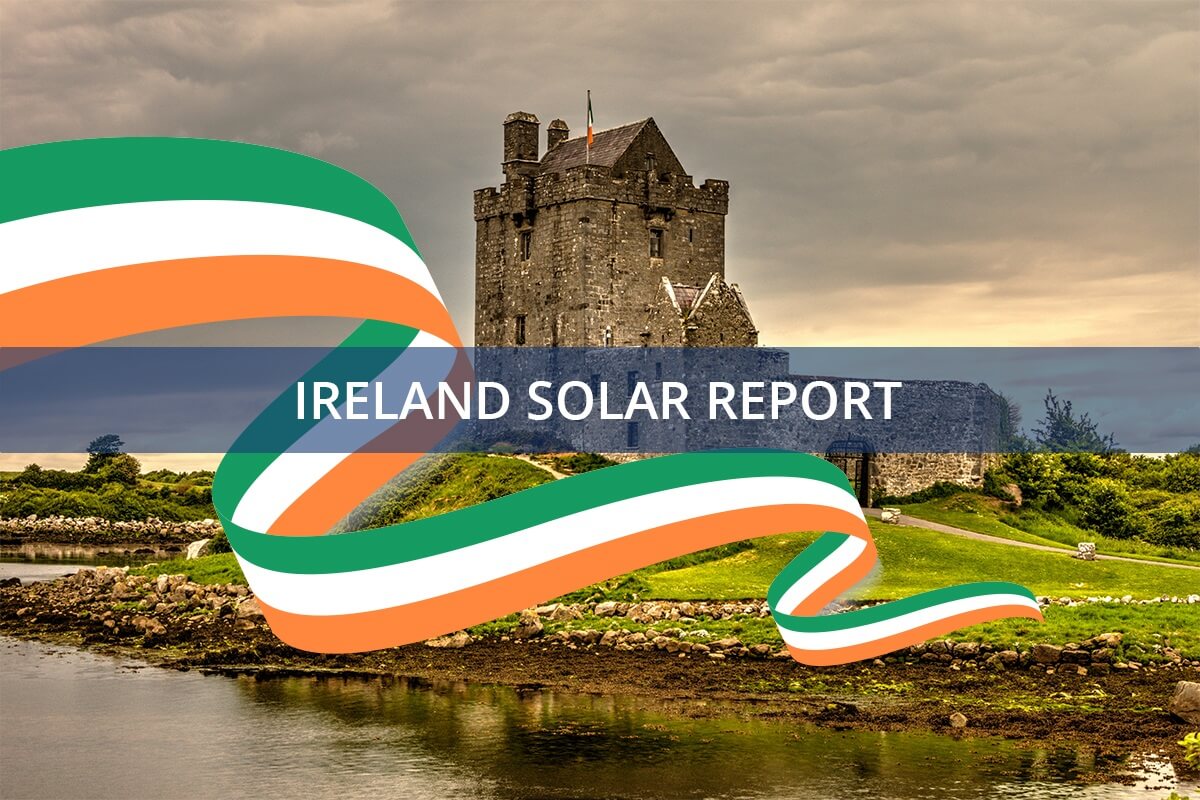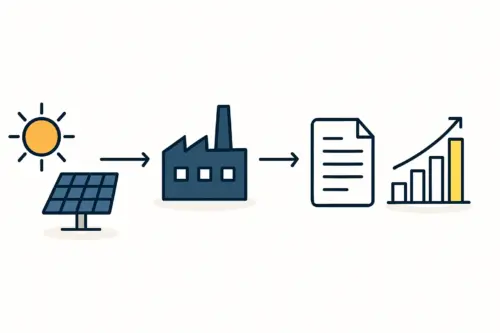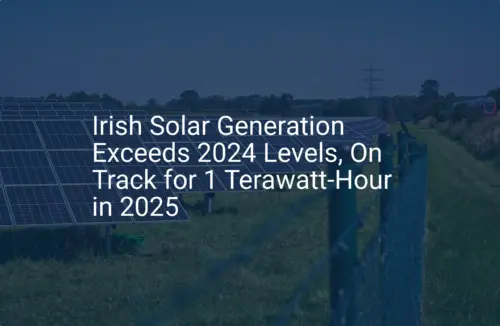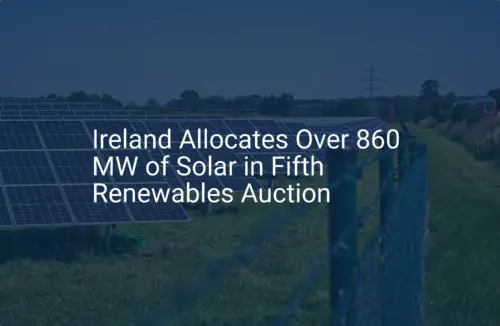An entrepreneur planning a solar module manufacturing facility often focuses first on technology and finance. Yet a less obvious but equally critical decision comes first: choosing the right physical location.
Selecting an industrial park isn’t just about securing a plot of land; it lays the foundation for the factory’s entire operational efficiency. In a high-tech, EU-based country like Ireland, the difference between a prime location and a suboptimal one can affect everything from production uptime to logistics costs.
This analysis provides a framework for evaluating industrial sites, using specific Irish business parks as case studies. It examines the non-negotiable infrastructure required for a successful solar manufacturing venture, offering a clear guide for investors and business leaders.
The Essential Infrastructure Checklist for a Solar Module Factory
Before comparing specific locations, it’s vital to understand the core infrastructure required. These are not preferences but prerequisites. A deficit in any one area can introduce significant operational risk and unforeseen costs. For a comprehensive overview, see our guide on the building requirements for a solar factory.
The four critical factors are:
-
Reliable Three-Phase Power Supply: Solar module manufacturing lines, particularly machines like laminators and stringers, are energy-intensive. A stable, high-capacity three-phase power connection is essential to prevent production halts and equipment damage.
-
Sufficient Water Access: Water is critical for processes like cleaning glass and cooling equipment. A reliable and cost-effective supply is a fundamental operational need.
-
Strategic Transport and Logistics Links: The factory will receive large quantities of raw materials like glass, cells, and aluminum frames, and ship out finished modules. Proximity to major motorways, ports, and airports is crucial for an efficient supply chain.
-
Land and Operational Cost-Effectiveness: While infrastructure is key, the investment must be commercially viable. The cost to purchase or lease land, along with local taxes and labor rates, directly influences the business model’s profitability.
A Comparative Look at Key Irish Industrial Locations
Ireland, through its development agency IDA Ireland, has cultivated several world-class business parks, each offering distinct strategic advantages. Examining them from a solar manufacturer’s perspective provides a practical look at the site selection process.
Ready to make big Profits?
The solar Industry is Booming
WE HELP NEWCOMERS to the solar industry start their own solar module production line. Customers can make BIG PROFITS by selling modules and finding investors, without wasting money and time on things they don't need!
IDA Business and Technology Park, Athlone
Overview: Situated in the center of Ireland, Athlone is a strategic ‘midlands’ option, balancing nationwide access with competitive costs.
Power: The park is well-established with robust connections to the national grid, managed by ESB Networks. New high-demand connections require detailed consultation, but the core infrastructure is designed for industrial users.
Water: Its location near the River Shannon ensures a plentiful water supply—a significant advantage for water-intensive industrial processes.
Transport: Proximity to the M6 motorway provides excellent east-west connectivity, linking Dublin and Galway. This central position is ideal for a factory aiming for distribution across the island of Ireland.
Cost: Land and leasing costs in Athlone are generally more competitive than in the major coastal cities, which can free up significant capital for investment in production machinery. Many new entrants find this balance of cost and connectivity highly attractive.
Park West Business Park, Dublin
Overview: As a premium location in the nation’s capital, Park West offers unparalleled international connectivity and a large labor pool.
Power: Located in a major metropolitan area, the park benefits from a high-capacity, resilient power grid. However, securing a new connection for a facility with a multi-megawatt demand still involves a rigorous application and planning process with ESB Networks.
Water: The park is served by a reliable municipal water system capable of supporting industrial needs.
Transport: Unmatched transport links are Park West’s primary advantage. It offers immediate access to the M50 motorway, Dublin Port, and Dublin Airport, making it ideal for an export-focused business reliant on air and sea freight.
Cost: This premium location comes with the highest land, lease, and operational costs in the country. This factor must be weighed carefully against the logistical benefits in any financial projection.
Ringaskiddy, Cork
Overview: Located in the south, Ringaskiddy is a major industrial zone with a strong focus on heavy industry and direct port access.
Power: The area’s infrastructure was developed to support large-scale pharmaceutical and manufacturing plants, ensuring high-capacity power is available. Verifying the capacity at a specific plot with the Commission for Regulation of Utilities (CRU) and ESB is a critical due diligence step.
Water: The site has access to an industrial-grade water supply designed for heavy use.
Transport: Its defining feature is direct access to the Port of Cork, one of Europe’s largest natural harbors. This is a decisive advantage for importing raw materials in bulk containers and exporting finished modules globally by sea.
Cost: Costs are competitive for a port location but can include premiums for sites with direct water access. It offers a middle ground between the expense of Dublin and the economy of a midlands location. For operations where sea freight is the bulk of logistics, a port-centric site like Ringaskiddy is often the most cost-effective choice long-term.
The Strategic Decision Framework: Beyond the Basics
Choosing a site involves more than ticking boxes. It requires a strategic alignment of the location’s strengths with the business model.
Labor Pool: Consider the availability of both technical and assembly line staff. Larger urban areas like Dublin and Cork offer bigger talent pools, while regional hubs like Athlone may provide a more stable, locally-rooted workforce.
Supply Chain Integration: The location must align with the sourcing strategy for the raw materials for solar panels. If key components are imported by sea, a port location like Ringaskiddy minimizes domestic transport costs.
Regulatory Engagement: Regardless of the location, early and proactive engagement with IDA Ireland, local county councils, and utility providers like ESB Networks is paramount. Experience from J.v.G. turnkey projects shows that securing utility agreements is often a critical-path item that dictates project timelines.
Frequently Asked Questions (FAQ)
How much power does a typical small-scale solar factory require?
A 20–50 MW annual capacity solar module factory typically needs a power connection ranging from 500 kVA to 2 MVA, depending on the specific machinery and level of automation. A detailed assessment is essential during the planning phase.
What is the role of IDA Ireland in this process?
IDA Ireland is the state agency responsible for attracting foreign direct investment. It acts as a facilitator, helping businesses identify suitable sites, navigate the regulatory landscape, and understand available supports.
Are there government incentives for setting up manufacturing in Ireland?
Yes, Ireland offers various supports for new industrial projects, which may include grants for capital investment or employment. IDA Ireland is the primary point of contact for exploring eligibility for these programs.
How long does it typically take to get a high-capacity power connection approved?
The timeline can vary significantly based on the location and existing grid capacity, ranging from several months to over a year. This makes it crucial to initiate discussions with ESB Networks at the earliest stage of site evaluation.
Conclusion and Next Steps
Choosing an industrial park is a foundational business decision that directly shapes a solar factory’s operational efficiency and long-term profitability. As the examples of Athlone, Dublin, and Cork show, Ireland offers a diverse portfolio of locations, each with a unique profile of advantages in power, water, logistics, and cost.
A successful choice depends on a rigorous evaluation that aligns the site’s characteristics with the company’s specific business and supply chain strategy. Once a potential location is identified, the next logical step is to develop a detailed financial model. To better understand the capital required for land, construction, and equipment, explore our comprehensive guide on the investment requirements for starting a solar factory.


